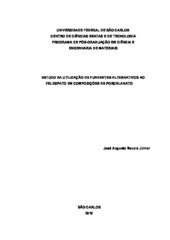Estudo da utilização de fundentes alternativos ao feldspato em composições de porcelanato

Ver/
Fecha
2010-01-05Autor
Baucia Júnior, José Augusto
Metadatos
Mostrar el registro completo del ítemResumen
The porcelainized stoneware has been outstanding in the current market of ceramic tiles because it offers excellent technical and esthetic features. In this research traditional ceramic raw materials were selected and a standard formulation reported in the literature was adopted, aiming to replace the vitreous phase former (feldspar) from the composition by two fluxing agents at high temperature. The objective was to evaluate these materials as a technical alternative with lower cost (30-40%), since, in the porcelain, the amount of flux former is very large, and represents approximately 50% of all raw materials used. The nepheline syenite was the natural raw material selected to replace the feldspar due to the fact that it belongs to the family of feldspathoids, and has similar physicochemical characteristics, therefore, high fluxing efficiency. The second vitreous phase former was a synthetic material, named flux agent, with physical and chemical characteristics very different from those of the feldspar and even greater fluxing efficiency. The replacement of feldspar occurred in complete and in part, through combinations of the alternative fluxes. The masses were processed from mixing of powders, wet milling, drying, desagglomeration, compaction and firing. In addition to the curves of vitrification, techniques, as sedimentometry, dilatometry, flexure strength test, electron microscopy, piroplastic deformation measurements and X-ray diffraction were used to characterize the material sintered at different temperatures. The most important results show that it is possible to combine nepheline and synthetic flux as alternative material other than feldspar because they promote vitrification at lower temperatures. Compositions with both fluxes showed low values of water absorption (<0.1%) and high mechanical strength (45 MPa) when compared to the standard, despite of the higher piroplastic deformation. The presence of nepheline does not change qualitatively the formation of phases and the flow generates new crystalline phases, in according to phases diagram.